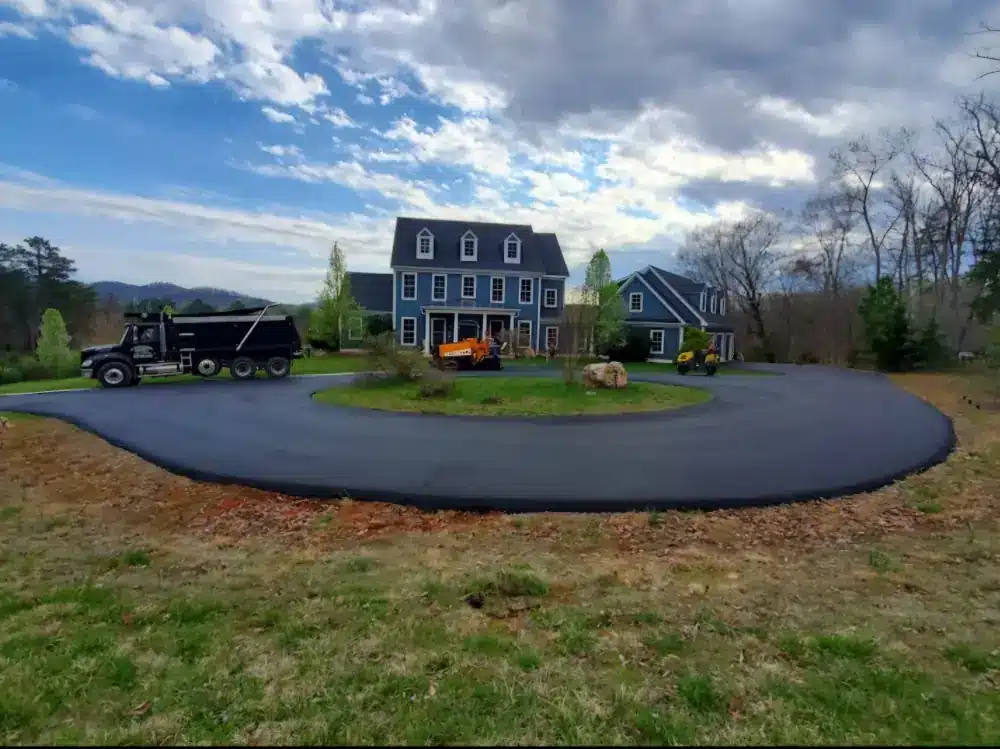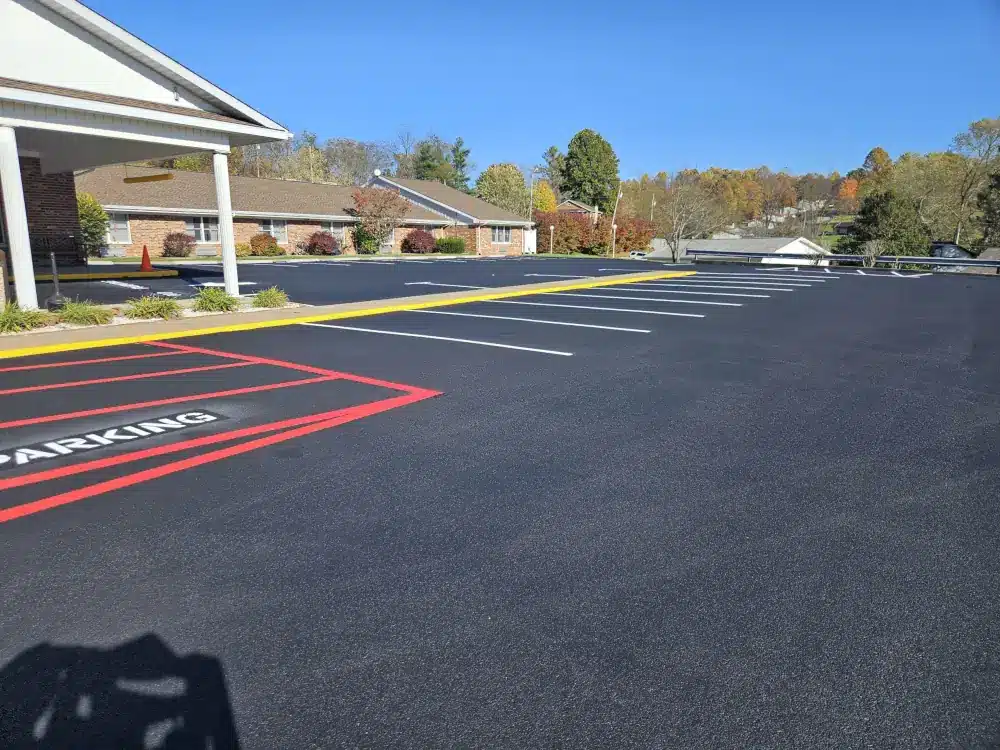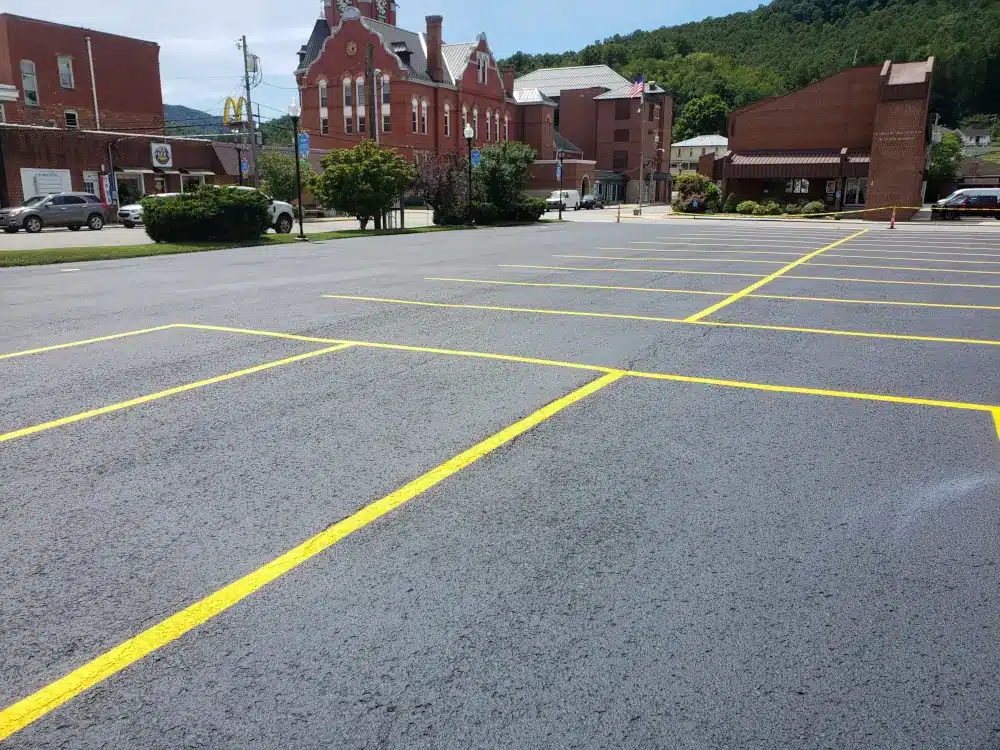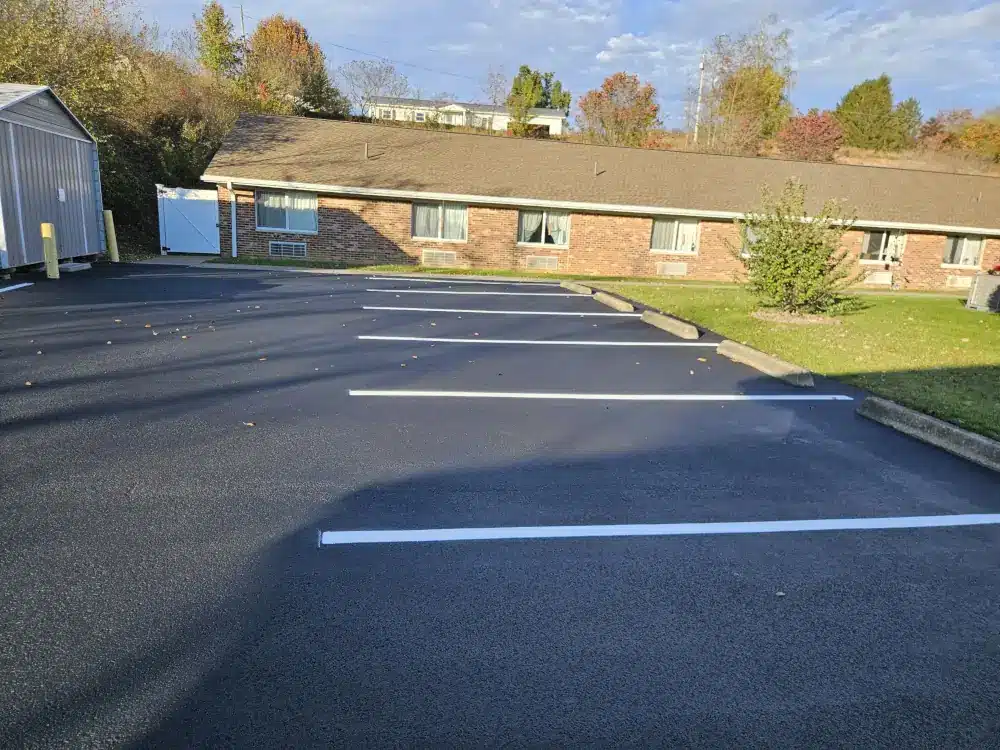Asphalt is one of the most commonly used materials for roads, driveways, and parking lots. Its strength, flexibility, and ability to withstand heavy traffic make it a go-to choice for paving projects across the country. However, traditional asphalt production relies on natural resources like gravel, sand, and bitumen—components that require extensive mining and processing. With rising material costs and growing environmental concerns, the demand for sustainable alternatives is increasing.
Recycled asphalt, also known as reclaimed asphalt pavement (RAP), is changing the way contractors and property owners approach paving. By reusing existing asphalt, RAP reduces waste, cuts costs, and provides an eco-friendly alternative to virgin materials. In fact, asphalt is one of the most recycled materials in the U.S., with millions of tons repurposed each year for roads, parking lots, and other infrastructure projects.
But how does recycled asphalt compare to new asphalt? What are the benefits and potential drawbacks? And is it the right choice for your next project? This guide takes an in-depth look at recycled asphalt—how it’s made, where it’s used, and why it’s gaining traction in the paving industry. Whether you’re a contractor, property owner, or just curious about sustainable construction, this article will give you a comprehensive understanding of RAP and its role in modern paving.
How Is Asphalt Recycled?
Recycling asphalt involves a systematic process that ensures the material maintains its structural integrity while reducing waste and conserving resources. The process consists of several steps:
Milling and Removal
The first step in asphalt recycling is milling, where old asphalt pavement is removed using specialized equipment. Milling machines grind up the asphalt surface, creating reclaimed asphalt pavement (RAP). This process can be done at various depths, depending on the condition of the pavement and the intended use of the recycled material.
Crushing and Screening
Once removed, the reclaimed asphalt is transported to a processing facility where it is crushed and screened. Large chunks of asphalt are broken down into smaller, more manageable sizes, often using impact crushers or jaw crushers. Screening ensures that the material meets the desired specifications for reuse.
Blending with New Materials
Recycled asphalt can be used on its own or blended with new asphalt mix to improve performance. Depending on the project requirements, RAP may be combined with fresh aggregate, bitumen, or rejuvenating agents to restore its flexibility and binding properties. This mixture can then be used in various applications, including road resurfacing and new pavement construction.
Reapplication Methods
Recycled asphalt can be reintroduced into paving projects using different methods:
Cold Mix Recycling: RAP is mixed with emulsified asphalt and applied at ambient temperatures, ideal for secondary roads and patching projects.
Hot Mix Recycling: RAP is heated and mixed with new asphalt at high temperatures, producing a durable and high-performance pavement surface.
Full-Depth Reclamation (FDR): Entire pavement structures are pulverized, mixed with stabilizing agents, and compacted to form a new base layer.
Through these processes, recycled asphalt continues to provide an effective, cost-saving, and environmentally friendly alternative to traditional paving materials.
Benefits of Using Recycled Asphalt
Recycled asphalt offers several key advantages, making it a preferred choice for many paving projects. These benefits include:
Cost Savings
One of the most significant advantages of using recycled asphalt is the reduction in material costs. Since RAP repurposes existing materials, it eliminates the need for purchasing virgin aggregates and bitumen, resulting in substantial savings for both contractors and property owners.
Environmental Impact
Recycling asphalt reduces the need for new raw materials, minimizing the depletion of natural resources. It also helps decrease landfill waste by repurposing old asphalt rather than discarding it. Additionally, the recycling process reduces energy consumption and greenhouse gas emissions associated with asphalt production and transportation.
Improved Performance
When properly processed and blended, recycled asphalt can offer comparable or even enhanced performance characteristics to new asphalt. RAP has been shown to improve pavement durability and flexibility, making it a viable option for roads, driveways, and parking lots.
Sustainability and Green Building Credits
The use of recycled asphalt supports sustainable construction initiatives and can contribute to earning LEED (Leadership in Energy and Environmental Design) credits for green building projects. Many municipalities and organizations prioritize RAP for its eco-friendly benefits.
Reduced Dependence on Oil
Since asphalt production relies on bitumen, a petroleum-based product, recycling asphalt helps mitigate dependence on oil and fluctuating petroleum prices. This stability benefits both contractors and consumers by providing more predictable pricing for paving projects.
Recycled asphalt is an innovative and sustainable alternative to traditional paving materials. With its cost savings, environmental benefits, and strong performance, RAP has become an increasingly popular choice for both residential and commercial paving projects. While there are challenges to consider, such as quality control and regulatory compliance, advancements in recycling technology continue to improve the reliability and efficiency of RAP.
As municipalities and contractors seek greener solutions, the use of recycled asphalt is expected to grow, supported by evolving regulations and incentives. Whether you’re resurfacing a road, repairing a driveway, or constructing a parking lot, considering recycled asphalt can be a smart, cost-effective, and environmentally responsible decision. By embracing this sustainable option, we contribute to a more resource-efficient and eco-friendly infrastructure future.




